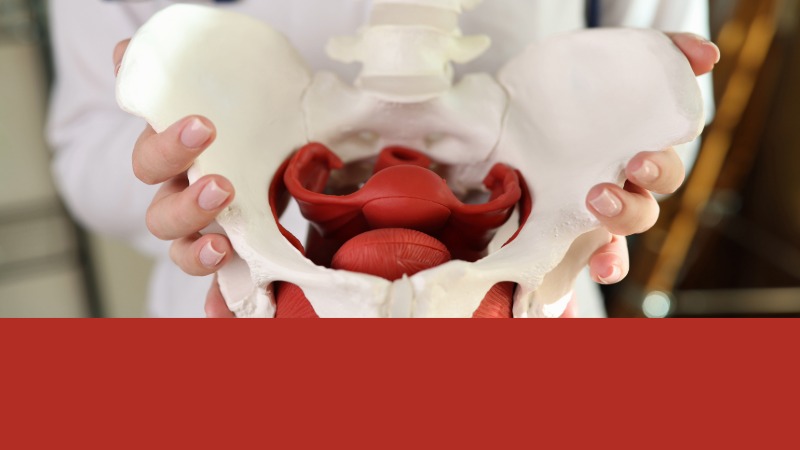
November 17, 2025
When most people think about muscles, they picture arms, legs, or abs. But there’s another group of muscles that often gets overlooked—the pelvic floor.
What Is the Pelvic Floor?
The pelvic floor is a group of muscles that stretches like a hammock across the bottom of your pelvis. These muscles run from the pubic bone in the front to the tailbone in the back, and across to the sit bones on each side.
Even though we don’t see them, these muscles do a lot of important work every day. They:
- Support your organs: The pelvic floor holds up the bladder, bowels, and reproductive organs. It helps keep these organs in place and supports them against gravity and movement.
- Control bladder and bowel function: These muscles tighten to prevent leaks and relax when it’s time to go to the bathroom.
- Provide stability: The pelvic floor works with your stomach, back, and breathing muscles to support your spine and hips during movement and exercise.
- Help with sexual function: These muscles play a role in comfort and sensation for both men and women.
Why It Matters and Signs You Might Need Help
When the pelvic floor muscles become weak, tight, or out of sync, it can lead to pelvic floor dysfunction. This can cause:
- Leaking urine or stool
- Feeling pressure or heaviness in your pelvis
- Constipation or trouble emptying your bladder
- Pain in your lower stomach, pelvis, or tailbone
- Going to the bathroom too often or feeling a strong, sudden urge
These problems are common, but many people feel embarrassed to talk about them. Some even avoid activities or change routines to hide their symptoms. But you don’t have to live that way—help is available. With the proper care, most pelvic floor problems can improve or even resolve completely.
What Is Pelvic Floor Physical Therapy?
Pelvic floor physical therapy (PFPT) is a gentle, effective treatment that helps your pelvic muscles function the way they should. A specialized therapist will spend time learning about your symptoms, daily habits, and goals. Each patient’s story is unique, and together you will make a treatment plan to improve your symptoms. Your therapist will help you understand how your body moves and how your pelvic floor fits into that.
During sessions, you may learn how to:
- Find and control your pelvic muscles through simple exercises
- Relax tight muscles that may be causing pain or pressure
- Improve posture and breathing to support your core and spine
- Build healthy bladder and bowel habits for better comfort and control
Your sessions typically include a combination of exercise, manual therapy, and education. Your therapist may use tools or feedback to show you how your muscles respond, but everything is done with your comfort in mind. For pregnant individuals, pain management, birth prep, and postpartum recovery help is available. Each treatment plan is made just for you, helping you move with more strength, confidence, and ease.
Taking the First Step
If you or someone you know is dealing with these symptoms, ask your doctor for a referral to a pelvic floor physical therapist. PFPT is a safe and natural way to retrain your body so you can move, laugh, and live without worry. Your pelvic floor works hard for you every day—take care of it, and it will take care of you!

Camille Lider, PT, DPT is a physical therapist at St. Peter's Health Physical Rehabilitation Clinic-North. She specializes in orthopedics, women's health and pelvic pain.
